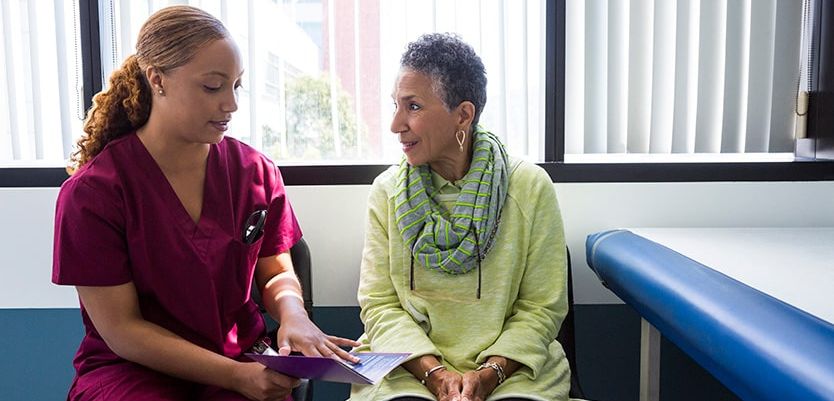I recently worked with a family whose little boy suffered from a rare neurodegenerative disorder. His parents enrolled him in a clinical trial testing a drug designed to halt or slow the disease’s progression. Later, the company announced plans to scrap the program after the study failed to show a benefit on all its endpoints. But the boy’s quality of life had, in fact, improved with the medication. He started to feed himself instead of being fed. He smiled more often, and he vocalized for the first time. These small victories were powerful. The boy’s parents sought out other families in the trial and learned their children, too, had gained similar, meaningful ground. The parents joined together and appealed to the company and to regulators, arguing that the drug had real impacts not captured by the trial’s endpoints. Ultimately, convinced by these families’ testimonies and evidence, the firm decided to continue working on the drug.
Patient centricity is a broken promise. How can we fix it?
This is just one anecdote, but it epitomizes two key challenges confronting the biopharmaceutical industry and regulators in the rare disease field: Understanding an illness from the perspective of patients and caregivers and choosing patient-relevant endpoints.
It has been more than a decade since the concept of “patient centricity” emerged. In the intervening years, some developers have sought to put its tenets into practice, engaging in sustained, substantive dialogue with patients throughout the drug development process.
But, at some companies, patient centricity simply means a 30-minute meeting with patients whose feedback is then overlooked. When I broach the topic with patient advocacy group (PAG) representatives at industry conferences, they routinely
roll their eyes.
Patient centricity has become a broken promise. Why? And how can we mend it?
Patients are the customers
Patients—not companies, not regulators, not healthcare providers, payers, or investors—are the ultimate consumers of medicines and treatments. Yet the healthcare industry lags far behind other sectors in focusing product development on the people it is supposed to serve.
One problem is the structure of our healthcare system, built around players with conflicting priorities. Developers, whether large, small or midsized, desire a return on investment and market success; regulators seek to uphold sound scientific, safety, and efficacy standards; and health technology assessment agencies compare treatments, cost-effectiveness, and the systemic economic impact of new therapies. Payers in universal healthcare systems must deliver care to large populations in budget-conscious ways. Private payers want to run profitable businesses. In this complex and contentious environment, it is easy to understand how all these players can lose sight of patients.
There are many reasons companies fail to engage effectively with patients before designing their trials and selecting endpoints. For one thing, it takes time and money to fully understand a rare disease and how it progresses, including its impact on the daily lives of patients and caregivers. And companies have very little time to spare—they may face investors or shareholders who demand swift progress, incentivizing them to launch trials, meet development milestones, and raise the next round of funding. At the same time, while regulatory agencies often reasonably insist on established endpoints, they have been slow to set up a framework for novel rare disease endpoints. Meanwhile, many companies find it daunting to communicate with patients and fear that direct collaboration could raise legal or ethical issues. Finally, the field lacks clear metrics to measure or reward success in the arena of patient engagement.
Any one of the parties listed above would recognize that this little boy’s rare smiles, his ability to feed himself and express emotion—and his family’s relief—represent a better quality of life. But collectively, they don’t know how to quantify that.
Of course, patients cannot be at the center of all aspects of drug development—for example, CMC, GMP, GLP, and preclinical models. And companies cannot make a drug commercially viable if it is not compliant with technical standards. That is why the term patient-centric is, in some cases, a misnomer. But CMC, GMP, and all the rest don’t matter if a product does not address what patients care about.
How to keep the promise
In this report, we provide a detailed examination of what developers can do to maintain a sharp and consistent focus on the needs of rare disease patients. We explain:
- How to run adaptive trials that streamline development and reduce patients’ chances of receiving a placebo or an inactive dose.
- Ways to partner with PAGs to design trials that work better for patients while complying with scientific and regulatory requirements.
- How to select optimal endpoints for a condition and validate novel endpoints with correlation analyses.
- How to utilize expedited regulatory programs to gain access to advice and guidance, rendering every aspect of development—from nonclinical, preclinical, CMC, and clinical—more efficient.
- How to dispel the regulatory myths around cell and gene therapies to make better decisions.
- How to do the preparatory work to ensure market access so that patients can benefit.
Despite the obstacles, focusing on patients makes pragmatic sense. Companies that do so from the earliest stages of development can, finally, fulfill the promise of patient-focused drug development and keep this evolving term both authentic and relevant to healthcare’s highest aim. In other words, that little boy.
Contributing Expert
